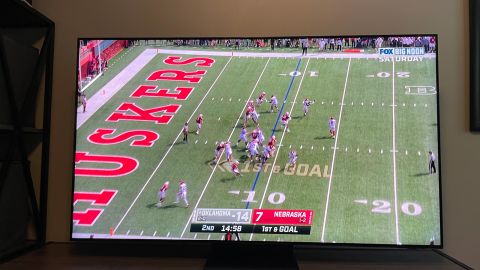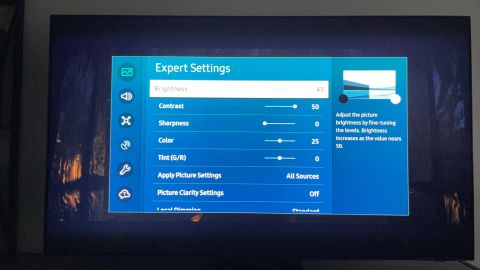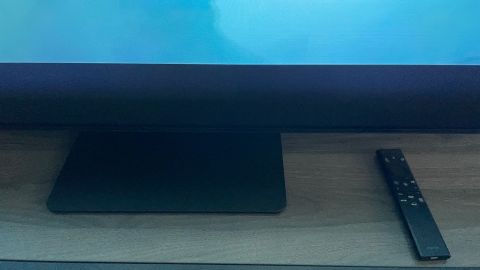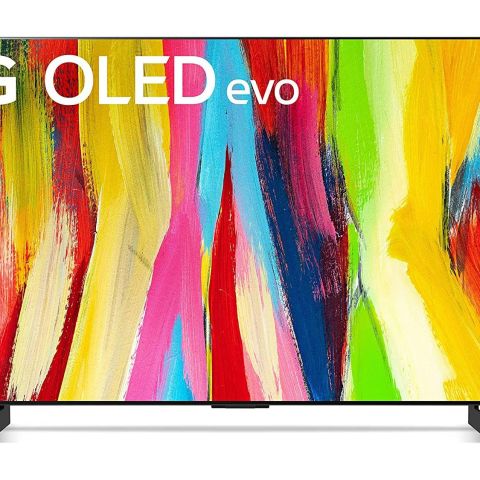In the battle between OLED TVs and mini-LED LCD TVs — the two technologies used in today’s best smart TVs — people who need a brighter picture usually go with an LCD. For those who want an intensely bright TV, Samsung has upped the ante with its QN90B Neo QLED 4K Smart TV. It uses its brightness well, creating a crisp picture with excellent contrast that rivals OLED screens.
The QN90B is about more than brightness. It includes the tech that gamers want to take full advantage of the latest gaming consoles. It also integrates cloud gaming services such as Xbox Cloud Gaming and Amazon Luna so you don’t even need a console to play the best games. While it’s not perfect, it will be a great option for many people.
A smart, bright TV
The Samsung QN90B is one of the brightest TVs you’ll find, making it great for sunny rooms. The brightness, along with mini-LED and local dimming tech, also helps it produce excellent contrast in dark scenes. It’s also packed with the latest gaming tech, including cloud gaming.

Did I mention the brightness? Because this TV is really bright. The first thing I needed to do was tone down the brightness to keep it from searing my eyes. The room I used the TV in gets average sunlight and the QN90B’s brightness can overcome a lot more. If you’ve had problems with not being able to see what’s on your TV during the day, this TV should be able to overcome them.
The QN90B uses mini-LED backlighting and local dimming, which allow for a more nuanced picture. Thanks to those mini LEDs, the images on the QN90B are very sharp and detailed. I especially appreciated the crisp images while watching college football in 4K, where the blades of grass had excellent definition and the ball flew without blurring.
Related: Samsung’s The Frame 2022 makes a gorgeous and unique TV even better
The set also has excellent contrast, which is important for seeing details in dark scenes, as are common in shows like House of the Dragon, Sandman and Lord of the Rings: The Rings of Power. While it doesn’t support Dolby Vision, it uses HDR10+ to adjust the brightness for each frame so you won’t miss the exquisite details of Khazad-dûm when Elrond visits Durin in The Rings of Power.
The TV can deliver accurate colors, but I needed to adjust the settings to get a picture that was right for me (more on that below). Overall, I thought the LG C2 produced a more pleasing picture, but others may prefer what the QN90B delivers.

That crisp picture paired with the QN90B’s 120Hz refresh rate and support for variable refresh rate, auto low latency mode, and Nvidia FreeSync Premium Pro result in a great gaming TV. Each of the four HDMI ports supports HDMI 2.1 to take full advantage of your PlayStation 5, Xbox Series X, Xbox Series S or high-end gaming PC, meaning it can deliver extra-smooth gameplay at 4K.
Playing Forza Horizon 5 on an Xbox Series X, the screen delivered excellent details without blurring even as the car raced at its fastest speed. In Fortnite, the characters and backgrounds were sharp, though the colors seemed a little off compared to the LG C2.
The QN90B also includes Samsung Gaming Hub, which lets you stream games from Xbox, Stadia, Geforce Now and other services without a console. Gameplay while streaming isn’t too bad, either: Playing Forza 5 and Fortnite through Xbox Game Pass was similar to the quality you’d get from an Xbox One.

The speakers in the QN90B produce surprisingly good sound — for a TV. With its 4.2.2 channel audio (55-inch and larger models) and support for Dolby Atmos, voices were easy to hear, and, with Intelligent Mode on, it created an impressively wide sound and even produced a bit of bass.
So technically you don’t need to add a soundbar. But do yourself a favor and get one for your home entertainment system anyway — it’ll add more depth to the sound and improve bass for a better viewing experience.
Samsung makes the QN90B in sizes that range from 43 inches ($1.099.99) to 85 inches ($3,299.99), with many models available in between. That means you can find one that’s right for the room you plan to put it in. I tested the 55-inch unit ($1,499.99). Expect similar performance in other models, except for the sound in the 43- and 50-inch units — they have fewer channels than the 55-inch and larger TVs.

While the final result can be impressive, you may have to work to get a pleasing image on the QN90B’s screen. Out of the box, I found the picture too bright and the colors weren’t right for my room. I really didn’t like the picture produced using the Intelligent Mode setting, which is supposed to automatically adjust to the room conditions; the AI mode of LG’s C2 produced a much better image.
But the QN90B offers lots of adjustments you can make, so you can find the right settings for you if you take the time. I liked the picture best when I turned off Intelligent Mode; switched to Movie Picture Mode; made some adjustments to brightness and sharpness; turned off Picture Clarity; and increased local dimming to Standard. You see what I mean about working for it.
The QN90B runs Samsung’s Tizen, which is one of the more robust smart TV operating systems. It has apps for the most popular streaming services, like Netflix and HBO Max. It integrates with Samsung’s SmartThings app to allow for control of other smart devices. It offers voice control through Alexa, Google Assistant or Samsung’s Bixby.
But on the QN90B, everything seems to take forever to launch and load. In reality, it takes a few seconds, but it is slower compared to a Roku or the relatively speedy WebOS on LG’s evo C2. Those extra seconds while you wait for a show to start are just enough to make your question your choices in life. Of course, you can get around this by adding a streaming device and bypassing Tizen altogether.
The stand gets in the way

Similar to complaints I had about the LG evo C2, the stand Samsung includes with the QN90B — while slick and attractive — doesn’t work for the way I want to set up my TV. It sticks out about three inches beyond the screen, which meant I had to place my soundbar way out in front of the TV. It also only raises the TV 2.75 inches above the surface — which is better than the C2 — but that can still result in a soundbar or center speaker blocking the bottom of the image.
| Sizes |
43, 50, 55, 65, 75 and 85 inches |
83, 77, 65, 55, 47, and 43 inches |
|---|---|---|
| Panel type |
QLED LCD |
OLED |
| Inputs |
4 HDMI (all support HDMI 2.1, one eARC), 2 USB, Wifi, Ethernet, coaxial antenna |
4 HDMI 2.1 (one with eARC), 3 USB, Wi-Fi, Ethernet, coaxial antenna |
| Outputs |
Optical digital audio, Bluetooth |
Optical digital audio, Bluetooth |
| HDR |
HDR10+ |
Dolby Vision, HDR10, HLG |
| Audio |
4.2.2 channels, support for Dolby Atmos |
2.2 channels, support for Dolby Atmos |
| Price |
From $1,099 |
From $1,149 |
Fans of LCD TVs will love what the Samsung QN90B offers. It’s oh-so-bright and packed with the latest tech. That allows it to deliver a crisp and detailed picture with excellent contrast.
My issues with the color were overcome by adjusting the settings, though the QN90B couldn’t match the vibrant colors of the LG C2. In the battle of OLED versus LCD, I still prefer OLEDs — but the differences continue to narrow, and no OLED can come close to the brightness of the QN90B. The LG C2 is the better overall TV, but the QN90B would be the right choice if you have a sunny room and need its extreme brightness.



Be the first to comment